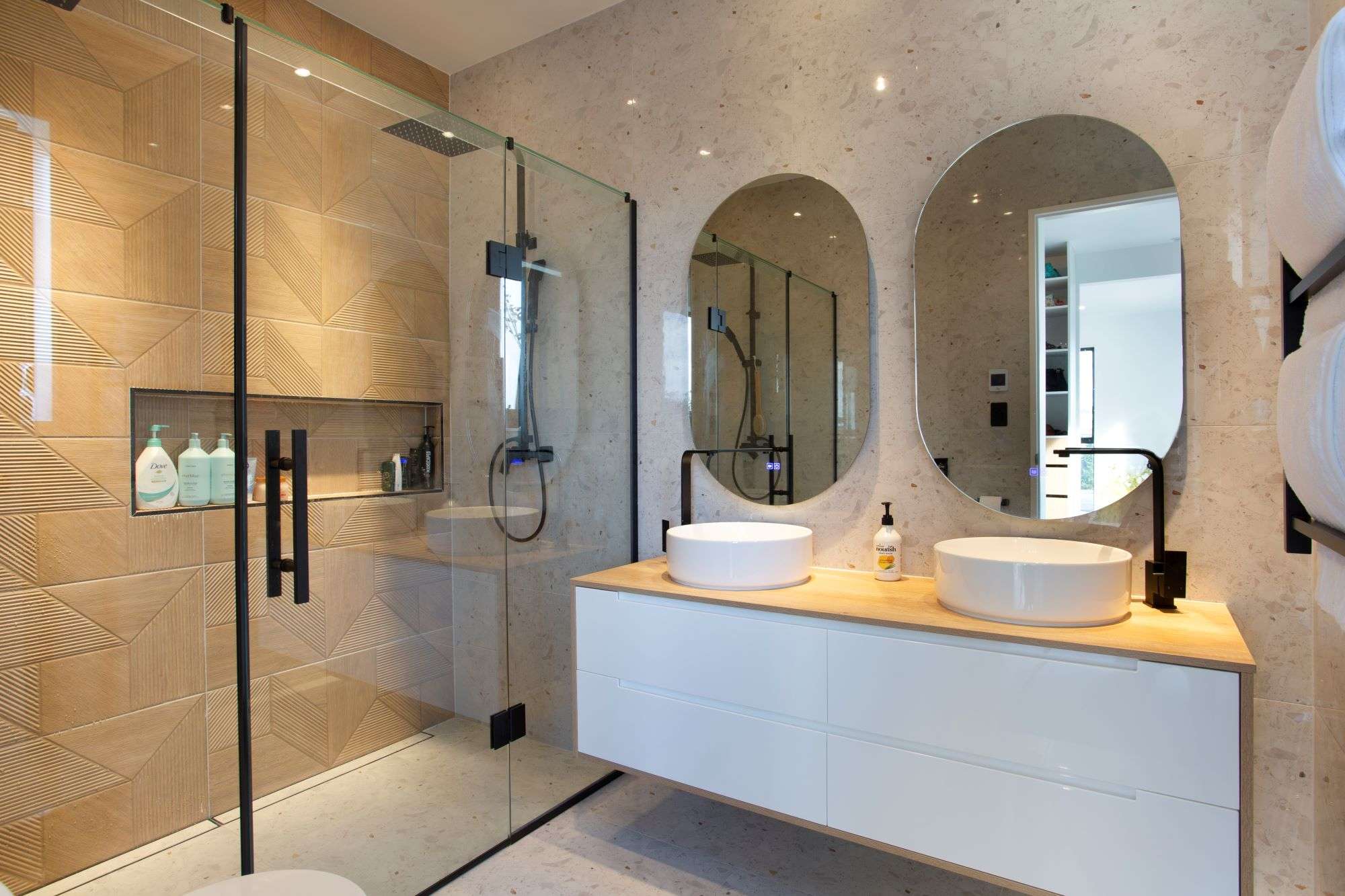
How to Repair Laminate Bathroom Vanity: A Step-by-Step Guide
When that shiny, easy-to-clean laminate in your bathroom starts getting tired, scratched or swollen, you might worry that it’s game over for your vanity. Maybe there are chips along the basin edge where someone’s dropped a hairdryer, peeling laminate on the drawer fronts, or worse — bubbling from too much water. Good news: you don’t need to replace the whole vanity; a few home improvement strategies can work wonders. Repairs for such projects are easier and more affordable than you’d think. A bit of Kiwi can-do spirit and some patient work can give that bathroom centrepiece a fresh new face.
What’s Laminate, Anyway?
Laminate is basically a thin layer of decorative plastic, bonded to a substrate like MDF (medium density fibreboard). The big pro is it resists stains, and is tough enough for busy households. But, like any surface in a high-use zone, it can cop some abuse. Moisture is laminate’s biggest enemy, especially where there are chips and cracks.
Identify Vanity Damage
Before you charge ahead, it helps to spot exactly what’s going on with your vanity. This makes a big difference to your repair method.
Here are common problems you’ll see in Kiwi bathrooms:
| Problem | Symptoms | Repairability |
| Surface scratches | White lines, minor marks | Very repairable |
| Chips & dings | Missing laminate, exposed MDF | Repairable (some skill needed) |
| Peeling laminate | Corners lifting or coming off | Needs rebonding or patch-up |
| Swelling/Bubbling MDF | Raised areas, soft or spongy | Sometimes repairable, often tricky |
| Stains/discolouration | Surface spots, faded patches | Repairable (sometimes) |
How to Repair Laminate Bathroom Vanity
Let’s walk through practical ways you can save your bathroom vanities from the landfill without breaking the bank.
Gather Repair Materials
Before starting any repair, make sure you have all the necessary materials:
-Cleaning supplies
-Appropriate adhesives
-Repair markers or paints
-Tools specific to your repair type
Fix Minor Scratches: A Quick Cosmetic Fix
For light surface scratches, you’re looking at a five-minute job.
All you need:
-Mild household cleaner
-Soft cloth
-Laminate touch-up marker (try hardware stores; colour-match as best you can)
-A small amount of furniture polish (optional)
Instructions:
1.Clean the area with a damp cloth and mild cleaner. Dry it off well.
2.Use the laminate touch-up marker over the scratches, following the direction of the grain or pattern.
3.Buff lightly with a clean cloth. Add a dash of furniture polish if the area looks dull.
Repair Chips and Cracks
A proper chip can look ugly, especially if it’s on a visible edge.
Here’s a quick way to cover your tracks:
-2-part epoxy putty (find one for timber/furniture)
-A craft knife or small spatula
-Laminate repair paint or marker
How to:
1.Clean and dry the chipped spot.
2.Mix the epoxy putty as the packet says. Fill the chip, slightly overfilling to allow for sanding.
3.Once set, use a sharp knife or sandpaper to level it flush with the surface.
4.Colour it in with a touch-up marker or laminate paint to disguise the repair.
This is great for small, shallow chips (up to 1cm wide). For anything huge, you might need a patch panel (more on that below).
Peeling Laminate: Edges, Corners & Drawers
Peeling is usually caused by steam or splash damage where water gets under the laminate’s edge.
What you’ll need:
-Contact adhesive (the kind for laminates/melamine)
-Small paintbrush or cotton bud
-Clamps or heavy books (to press it down)
-Baking paper
Remove Vanity Hardware
If necessary, remove handles or hardware for better access to peeling areas.
The process:
1.Gently lift the peeling section a little further to get glue underneath.
2.Brush a small amount of contact adhesive onto both surfaces (the back of the laminate, and the MDF/particleboard underneath).
3.Leave this to go tacky (follow the glue instructions, usually 5-15 minutes).
4.Carefully press the laminate back down, using baking paper underneath your clamp to stop glue squeezing out onto the surface.
5.Clamp or weigh it for at least an hour.
6.Peel away the baking paper and wipe up any ooze.
Bubbling or Swelling
Laminate that’s bubbled up or is soft underneath is a bigger issue. This means water has got under the laminate and affected the wood. Sometimes, very minor bubbling can be disguised, but if it’s spongy underneath, the MDF has likely started to break down.
For small, hard bubbles:
1.Place a piece of baking paper over the bubbled area.
2.Iron very carefully on a low setting for a few seconds, pressing the laminate down. The heat can soften glue and let you squash it flat again (this is sometimes a temporary fix).
If the board underneath is soft and crumbly, your only long-term fix is to replace just that section. This is possible if the problem is localised (e.g., just a side panel), but means getting a replacement board cut to size and having a matching piece of laminate attached.

Replace Damaged Laminate
Sometimes a dent or gouge is too large for markers or putty. If you’re wondering how to repair laminate bathroom vanity or a damaged bathroom cabinet, here’s how you can patch it up for a result you’ll be happy to look at each morning.
1.Remove the old damaged laminate, cut away with a sharp knife.
2.Buy a matching or complementary sheet of self-adhesive laminate from a hardware store.
3.Cut the patch slightly oversize, and test-fit.Apply the patch, making sure there are NO air bubbles.
4.Apply the patch, making sure there are NO air bubbles.
5.Use a sharp craft knife to trim the patch to size, following the edge closely.
If you plan your projects right, you can sometimes make it look intentional, almost like an inlay or design feature.
Seal the Laminate Vanity
For extra protection, consider applying a thin bead of clear silicone around edges where water might penetrate.
Reattach Vanity Hardware
Replace any handles or hardware you removed earlier.
When To Call In The Pros
If you’re feeling out of your depth, it’s worth speaking with a cabinetry expert. In Auckland, teams like Awesome Kitchens (with their flash German machinery and slick fitters) can remake doors or panels to match perfectly. Or if you’re considering a fresh look, they’ll custom-produce pieces to slot into your existing vanity for a near-new appearance, all done in a fraction of the time a full bathroom renovation would take.
Maintain Bathroom Vanity
A few simple habits keep your bathroom vanity looking sharp for years:
-Always wipe up spills and splashes promptly, especially around the basin and taps.
-Avoid harsh cleaners or scourers. Stick to soft cloths and mild detergent.
-Put a tray under hot hair tools to avoid dropping them directly on laminate.
-Open the bathroom window or use an extractor fan to keep moisture down.
-Fix leaky taps. Even a little regular drip wrecks the vanity edge over time.
FAQs: What Most Homeowners Want To Know
Do I have to remove the whole vanity to fix laminate?
Usually, no. Most repairs can be done with the vanity in place. For bigger panel swaps, sometimes it’s easiest to take the top off, but only if you know what you’re doing with plumbing.
Can I paint over laminate?
Yes, but prep is everything. Lightly sand to give the paint something to grip to, then use a good primer made for laminate. Bathroom-suitable enamel or acrylic paint over the top holds up best in steamy conditions.
Is it worth fixing, or just buy a new one?
If the structure of the vanity is good and it’s just the surface that’s seen better days, a smart repair will save you hundreds. If moisture’s rotted the whole structure, it’s time for something new.
How hard is it to repair laminate yourself?
With patience and the right materials, most small fixes are straightforward. Take your time and don’t cut corners on surface prep.
A Quick Cost Table
Here’s what to expect if DIY isn’t your style, or you need fresh parts made:
| Service | Typical Cost Range (NZD) |
| Laminate repair kit (DIY) | $10 – $30 |
| Replacement bathroom vanity door | $80 – $180 per door |
| Full panel remake (pro install) | $200 – $500+ |
| Entire new vanity (standard) | $350 – $800+ |
Why the difference? Custom colours, textures, and dimensions add cost — companies like Awesome Kitchens will match your vanity colour to existing finishes if you want everything looking cohesive.
Upgrade Options If You’re Over the Old Look
While you’re at it, maybe it’s time to revive the whole space. New handles, modern tapware, or swapping grout can give a whole new vibe without ripping everything out. You could even talk to the Awesome Kitchens team about resurfacing doors or adding a new top to your old vanity if the structure is still solid.
A Laminate Repair Checklist:
-Clean the area twice so your repair works first go.
-Always fix moisture leaks before patching up.
-Choose repair materials suited to your colour and use (don’t skip the matching marker or paint).
-Give glue plenty of time to set (overnight if possible for best grip).
-Take a photo of your vanity before starting for colour reference.
Knowing you can patch up your vanity – and keep it looking presentable – means you won’t dread those inevitable little accidents in such a busy room. If you’ve bought your bathroom furniture from a reputable brand, checking for spares or replacement parts is always an option too. Caring for laminate isn’t hard, it just needs attention every now and then. Less mess, less hassle, and extra years out of your bathroom investment.
